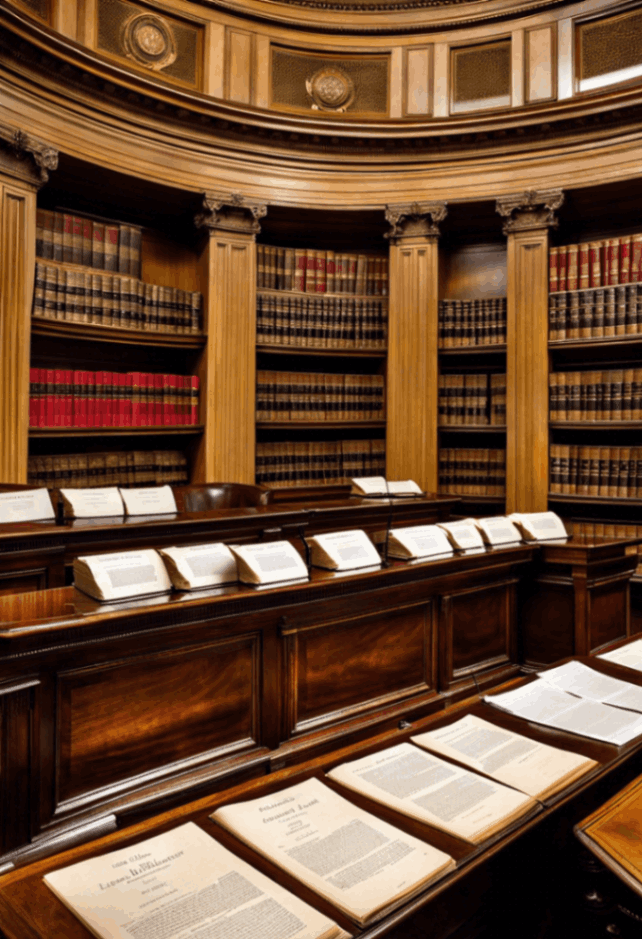

When we talk about the historical context and evolution of trade regulations, particularly tariffs and trade barriers, it's really a fascinating journey. Receive the news view that. It's not like these things just popped outta nowhere. Tariffs and trade barriers have been around for centuries, morphing and adapting to the changing economic landscapes.
Get the news view here. Back in the day, in ancient times even, rulers imposed taxes on goods entering their territories. They weren't all that concerned about free trade; they mostly wanted revenue and control over what's coming into their lands. Fast forward to medieval Europe, and you see kingdoms doing much of the same thingtrying to protect local industries by slapping taxes on imported goods.
But let's not kid ourselves, it wasn't until the 18th century when things started shifting quite a bit. The ideas of economists like Adam Smith began to take root. Smith argued against heavy tariffs, claiming they hindered economic growth. His thoughts were revolutionary at the timepeople actually began considering that maybe less regulation could be beneficial.
The 19th century was a biggie for trade reforms too. Britain led the way with its repeal of the Corn Laws in 1846. Those laws had placed high tariffs on imported grains to protect domestic producers but ended up causing food prices to skyrocket. Their repeal marked a significant move toward freer trade policies.
Of course, it ain't all smooth sailing from there. The early 20th century saw countries erecting new barriers again, especially during tough economic times like the Great Depression. The United States' Smoot-Hawley Tariff Act of 1930 is notorious for escalating global trade tensions right before World War II.
Post-World War II era brought another shift thoughthe birth of international organizations aimed at reducing such barriers became prominent. GATT (General Agreement on Tariffs and Trade), established in 1947, was one such entity working towards lowering tariffs worldwide.
And oh boy! Enter WTO (World Trade Organization) in 1995 which replaced GATTit didn't just deal with tariff reductions but also other forms of trade barriers like quotas or subsidies making sure nations played fairer games when trading internationally.
But let's face it; while globalization has made many push for fewer restrictions in modern times there's always gonna be some level of protectionism lingering around because no country wants its market completely vulnerable either!
So yeahtariffs & trade barriers have evolved dramatically based upon differing economic theories societal needs political climates etcetera through history showing us how complex yet intriguing our interconnected world really can get sometimes!
Sure, heres a short essay on the term "Types of Tariffs and Their Economic Impacts" for the topic "Tariffs and Trade Barriers":
---
When discussing tariffs and trade barriers, it's essential to understand that not all tariffs are created equal. There are different types of tariffs that countries use to regulate trade, each with its own economic impacts. Let's dive into these varying tariffs and see how they can affect economies.
Firstly, we have **specific tariffs**, which impose a fixed fee per unit of imported goods. For example, a country might charge $10 for every pair of shoes brought in from abroad. This type doesn't fluctuate with the price changes, making it easier to predict revenues but not necessarily fair across all products.
On the other hand (and this one's more complex), there are **ad valorem tariffs**. These are based on a percentage of the value of the imported good. If you import electronics worth $1,000 with an ad valorem tariff of 5%, you'll be paying $50 in taxes. The downside? As prices go up or down, so does the tariff amount creating uncertainty for businesses planning their budgets.
Then there's **compound tariffs**, which combine both specific and ad valorem elements. So you might pay a fixed fee plus a percentage based on the item's value kind of like mixing chocolate syrup into milk; it's got two parts making up one whole!
Now let's talk about their economic impacts... They ain't always straightforward! For even more details view this. High tariffs can protect domestic industries by making foreign goods pricier compared to local alternatives. It sounds great if you're trying to support homegrown businesses but and there's always a 'but' consumers end up facing higher prices overall.
Moreover (here's where things get tricky), retaliatory actions often follow high tariff impositions. If Country A slaps heavy duties on imports from Country B, don't be surprised if Country B retaliates similarly! It's like playing tit-for-tat at an international scale, leading sometimes to full-blown trade wars affecting global markets adversely.
Interestingly enough (believe it or not), some argue that tariffs can lead to inefficiencies within protected industries since they're shielded from competition. Without needing constant innovation or improvement due to lackluster competition pressure - companies might stagnate over time instead!
Lastly - lets not forget **tariff-rate quotas**: these set low duties on imports up till certain quantities after which higher rates kick-in drastically discouraging additional imports beyond quotas limits! It creates initial benefits without overwhelming domestic producers but long-term scenarios may vary significantly depending upon actual market dynamics involved...
In conclusion: while various types exist each having unique characteristics influencing respective sectors differently; overall consequences remain mixed bag balancing between protecting national interests versus fostering competitive environment essential sustaining healthy economic growth globally... Ain't nothing ever black-and-white when dealing such intricate subject matter eh?
---
In the UK, the concept of " typical legislation" initially developed during the Center Ages, which refers to law created through court decisions and criterion instead than with legal laws.
The Miranda rights, which have to be read to a suspect in the United States before wondering about, were developed following the site instance Miranda v. Arizona in 1966, making certain people are aware of their rights.
Sharia Law, originated from the Quran and the Hadiths, plays a vital role in the lawful systems of several nations between East and North Africa.
The initial recorded situation of copyright law go back to 6th century AD Byzantium, under the regulation of Emperor Justinian.
Non-Tariff Barriers: Quotas, Subsidies, and Standards
When we talk about trade barriers, tariffs often come to mind first. But theres a whole other side to it that doesnt get enough attention non-tariff barriers (NTBs). These sneaky little hurdles can be just as formidable, even though they ain't always obvious at first glance. NTBs include quotas, subsidies, and standards which play a huge role in international trade.
Quotas are kinda like setting limits on the amount of a product that can be imported or exported during a certain period. They're not really charging extra money like tariffs do; instead, they're saying "Hey! You can only bring this much into our country." This might sound simple but it actually has profound impacts on global trade dynamics. Imagine you're running a business and suddenly you can't import more than 100 units of raw material because of some quota. It's bound to mess up your production plans big time.
Now let's chat about subsidies for a moment. Governments use 'em to support local industries by giving them financial aid or tax reductions. On the surface, it's all good helping out domestic players compete better. But wait! This means foreign competitors are at a disadvantage when trying to enter that market because they dont get those sweet deals from their own government. So while subsidies ain't direct taxes on imports or exports, they still tilt the playing field heavily in favor of local businesses.
Then there's standards oh boy, these can be real tricky! Countries set various health, safety and technical standards that goods must meet before entering the market. It sounds fair enough; after all who doesn't want safe products? However sometimes these standards are set so high or so specific that foreign producers struggle to comply with them even if their products are perfectly fine otherwise! For example if one country requires all electronics sold within its borders to have unique plugs only manufactured locally well then guess what? Foreign electronics manufacturers either gotta spend loads adapting their products specifically for this market or face exclusion altogether.
So yeah quotas limit quantities directly without imposing additional costs; subsidies give local industries unfair advantages; and standards create hidden hurdles through regulations which may seem benign but aren't necessarily so straightforwardly beneficial!
In essence non-tariff barriers operate subtly yet effectively shaping international trade patterns significantly despite lacking immediate visibility compared traditional tariff mechanisms!
Oh my gosh - I almost forgot another point related these NTBs influence also consumer choices indirectly affecting overall economy health both importing exporting nations respectively hence why understanding addressing crucial maintaining balanced equitable global trading system everyone involved benefits equally ultimately ensuring sustainable growth prosperity worldwide long run surely agrees?!


International trade agreements and legal frameworks are pretty crucial when it comes to tariffs and trade barriers. These agreements aren't just about countries deciding to swap goods; they're about setting the rules of the game. And, oh boy, there are lots of rules! Sometimes it feels like you need a law degree just to understand them all.
First off, let's talk about tariffs. They're basically taxes on imports. You'd think that they'd be straightforward, but no way! Different countries have different rates for different products. It's a bit like a maze, honestly. The idea behind tariffs is kinda simple: protect local industries from foreign competition by making imported goods more expensive. But in reality? It often gets messy.
Now, trade barriers aren't just limited to tariffs. Nope, there's also quotas which limit the amount of certain products that can be imported or exported during a given time frame. Then there're non-tariff barriers like licensing requirements or standards that seem almost designed to trip up exporters from other countries.
One big player in the world of international trade agreements is the World Trade Organization (WTO). They try to create some order outta this chaos with their set of agreed-upon rules and regulations aimed at reducing trade barriers globally. But hey, it's not always smooth sailing far from it actually!
Take NAFTA for example - well now known as USMCA after being renegotiated between USA, Canada and Mexico was supposed to eliminate most tariffs between these nations but guess what? There've been disputes over dairy products here or auto parts there ever since its inception!
And then there's Brexit... Oh dear! The UK's exit from EU has led them into negotiating new bilateral trade deals left right center while trying desperately not mess up relations too much with their European neighbors who used be part single market without any internal border controls whatsoever!
So yeah.. International Trade Agreements might aim for smoother commerce among nations yet they frequently end tangled web complex legalities instead lessening obstacles completely free-flowing global marketplace dreamt by economists everywhere.
In conclusion if we even dare call it such because honestly journey understanding intricacies never-ending saga unto itself- navigating world involving myriad tariff structures along sundry forms barrier enforcement requires patience tenacity good chunk luck thrown mix too!
Dispute Resolution Mechanisms in International Trade Law for Tariffs and Trade Barriers
In the intricate landscape of international trade, dispute resolution mechanisms play a crucial role when it comes to tariffs and trade barriers. These tools are indispensable because no country's gonna let another impose unfair restrictions on its goods without raising a fuss. So, it's not surprising that disputes arise frequently in this domain, necessitating effective ways to resolve them.
First off, let's talk about what these mechanisms actually are. Simply put, they're formal procedures established by international bodiesprimarily the World Trade Organization (WTO)to address grievances between member states over trade issues such as tariffs and barriers. You'd think countries would sort out their problems amicably, but that's rarely the case. Instead, they often resort to these structured processes to find a solution that's acceptable to all parties involved.
The WTO's Dispute Settlement Understanding (DSU) is probably the most well-known mechanism in this context. It provides a standardized framework for resolving conflicts through consultations, panels, and appellate reviews if necessary. Eh, you might say it's like going to court but on an international stage. The aim is always to find mutually agreeable solutions rather than imposing harsh penalties outrightly.
It's worth mentioning that not all disputes get resolved smoothly even with these mechanisms in place. Sometimes they drag on for years! A country might argue that another has imposed undue tariffs or non-tariff barriers like quotas or stringent regulations affecting imports negatively. Let's be honest; nobody likes being told their product standards ain't good enough! Hence, negotiations can become really complex.
Moreover, while the DSU is highly regarded for its structured approach and fairness principles, it's not without criticisms either. Some argue its too slow or biased towards larger economies who can afford lengthy legal battles more easily than smaller nations can. Others say it doesnt do enough to enforce rulings once they've been madecountries sometimes just ignore decisions if they dont favor them!
Regional agreements also have their own dispute resolution mechanisms which work alongside global ones like those under the WTO umbrella but focus specifically on regional mattersfor instance within NAFTA/USMCA or EU frameworks where rules might differ slightly yet aim at similar objectives of fair trading practices amongst members.
To sum up briefly: Dispute resolution mechanisms are essential cogs in managing international trade relations concerning tariffs and other barriers but aint perfect by any stretch of imaginationtheyre evolving constantly striving towards better efficiency fairness equitability... Well hopefully someday well see fewer disputes overall wouldnt that be great?

The Role of the World Trade Organization (WTO) in Tariffs and Trade Barriers
Gosh, where do I even start with the World Trade Organization (WTO)? It's supposed to be this big deal when it comes to tariffs and trade barriers. But sometimes, you can't help but wonder if it's really making a difference or not. The WTO is like that friend who's always trying to keep the peace at a party you know they're doing their best, but there's still gonna be some drama.
So, what's the deal with tariffs and trade barriers? Tariffs are kinda like taxes on goods coming into a country. They're meant to protect local businesses from foreign competition by making imported goods more expensive. On the other hand, trade barriers can include things like quotas or regulations that make it harder for foreign goods to enter a market. And boy, do they cause all sorts of problems!
Enter the WTO. It was established in 1995 to replace the General Agreement on Tariffs and Trade (GATT), which had been around since 1948. The main goal of the WTO is to promote free trade by reducing these pesky tariffs and trade barriers that countries put up against each other. In theory, this should make everything fairer and more efficient but hey, nothing's perfect.
One way the WTO does its thing is through negotiations called "rounds." These rounds are basically meetings where member countries get together and hammer out deals to reduce tariffs and other barriers. Sounds simple enough, right? Well, it's not always smooth sailing. Countries have different interests and priorities, so reaching an agreement can be like herding cats.
Another important role of the WTO is settling disputes between members. When one country thinks another isn't playing fair maybe they're slapping on extra tariffs or creating sneaky new regulations they can take their case to the WTO's Dispute Settlement Body (DSB). The DSB listens to both sides and makes a ruling that's supposed to resolve things without causing too much bad blood.
But let's face it: not everyone thinks the WTO is doing an amazing job. Critics argue that it's biased towards wealthy nations who already have plenty of advantages in global trade I mean seriously, how many times have we seen smaller countries getting steamrolled? Plus there are concerns about how effective these dispute settlements really are; sometimes it feels like they're more about saving face than actually fixing anything.
Still though despite all its flaws we gotta admit that without something like the wto our world would probably look very different today with even more crazy high tariffs everywhere making international business almost impossible! So yeah while theres always room for improvement lets give credit where its due - thanks wto for at least trying your best keeping things somewhat under control in this wild world of global commerce!
Sure, here's a short essay that fits your criteria:
---
**Case Studies on Tariffs and Trade Barriers in Global Markets**
When we talk about global trade, tariffs and trade barriers often come up as major points of contention. They ain't just numbers or policies; they have real-world impacts on businesses, consumers, and economies. Let's dive into some case studies to see how these things actually play out.
First off, let's take a look at the U.S.-China trade war that kicked off around 2018. The U.S. imposed hefty tariffs on Chinese goods, arguing it was necessary to protect American jobs and curb unfair practices. China didn't sit quietly; they slapped back with their own set of tariffs on American products like soybeans and automobiles. What happened? Prices went up for consumers in both countries, farmers struggled with plummeting exports, and companies had to navigate an increasingly uncertain market landscape.
Another interesting case is the European Union's stance on steel imports. The EU has traditionally been quite protective of its steel industry. To combat what they call "dumping" (when foreign producers sell goods below market value), the EU imposes anti-dumping duties on imported steel from countries like China and Russia. This might help local industries survive but it also means higher costs for manufacturers who rely on imported steel to make everything from cars to refrigerators.
In contrast, let's consider Canadas dairy industry which is heavily protected by supply management systems including high tariffs on dairy imports. While this ensures stable prices for Canadian farmers, it's not without drawbacksCanadian consumers end up paying more for milk and cheese compared to their neighbors in the U.S.
But hey! Not all tariffs lead to negative outcomes. Take South Korea's automotive sector as an example: theyve strategically used tariffs combined with other measures like subsidies to nurture homegrown brands such as Hyundai and Kia into global powerhouses over the years.
While these examples show different facets of how tariffs can shape markets, one things cleartheyre double-edged swords. On one hand, they can protect domestic industries from unfair competition; but on the other hand, they often lead to higher prices for consumers and strained international relations.
So yeah... Navigating through these complexities isn't straightforward at all! Whether youre a policymaker trying to balance national interests or a business figuring out how best to operate under new regulationsthere are no easy answers when it comes to imposing or responding against tariffs and trade barriers.
In conclusion (without repeating myself too much!), examining these case studies makes you realize that while intended benefits might be achieved sometimesit usually comes at some cost somewhere down the line!
---